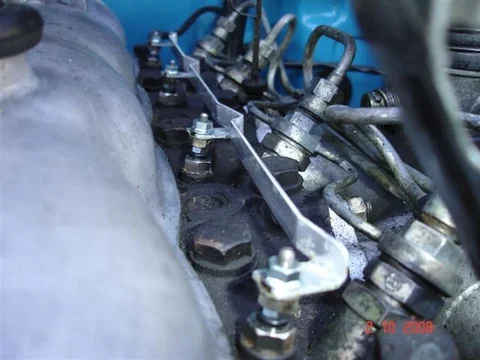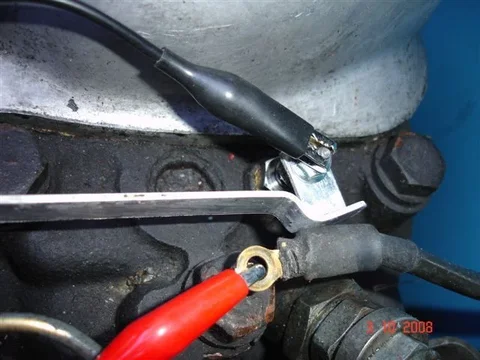- Thread starter
- #41
And here is the whole busbar reinstalled:

Now for the performance of the new plugs:
First the ambient temperature for this latest test was 1/2 oC warmer than before (13 1/2 oC or 56 oF instead of 13 oC). And these were the results (with the former figures for the old ND plugs in brackets):
It took 13 sec (15 sec) till I could see some sign of glow in the glow controller and 25 sec (30 sec) before "full glow" was achieved.------- Slightly shorter I think - but that could just be my imagination because my judgement of "glow" is entirely "subjective".
Voltage at G: 10.9V (10.4)
Between G and S: 2.3V (2.4)
At S: 8.6V (8.4)


Now for the performance of the new plugs:
First the ambient temperature for this latest test was 1/2 oC warmer than before (13 1/2 oC or 56 oF instead of 13 oC). And these were the results (with the former figures for the old ND plugs in brackets):
It took 13 sec (15 sec) till I could see some sign of glow in the glow controller and 25 sec (30 sec) before "full glow" was achieved.------- Slightly shorter I think - but that could just be my imagination because my judgement of "glow" is entirely "subjective".
Voltage at G: 10.9V (10.4)
Between G and S: 2.3V (2.4)
At S: 8.6V (8.4)



 I saw a little -30 to +30 automotive ammeter 4-sale in a junk bin outside my favorite antique shop yesterday - So if it is still there today I'll buy it and try testing the glow current again with that.
I saw a little -30 to +30 automotive ammeter 4-sale in a junk bin outside my favorite antique shop yesterday - So if it is still there today I'll buy it and try testing the glow current again with that.

